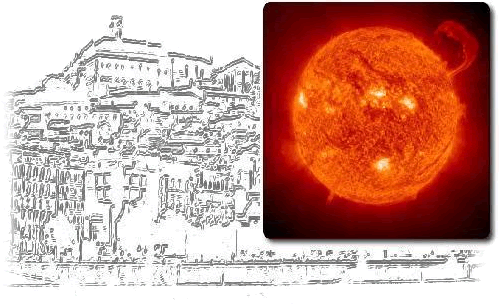|
|
|
|
|
|
|
|
|
|
|
|
|
Theodosios Chatzistergos, Mr. - MSc |
|
Max-Planck-institut für Sonnensystemforschung, Göttingen, Germany |
|
http://www.mps.mpg.de/74609/employee_page?c=74052&employee_id=27558 |
|
|
|
|
|
Session 4 - Speaker |
|
Exploiting historical Ca II K spectroheliogram archives: Preliminary results from four archives |
|
T. Chatzistergos (1), I. Ermolli (2), S. K. Solanki (1,3), N. A. Krivova (1)
(1) Max-Planck-institut für Sonnensystemforschung, Göttingen, Germany, (2) INAF Osservatorio Astronomico di Roma, Italy, (3) School of Space Research, Kyung Hee University, Yongin, Gyeonggi 446-701, Republic of Korea |
|
|
|
Regular measurements of the solar irradiance began in the late 1970s.
Longer timeseries are essential in order to acquire an insight about the long-term
solar variability, and improve our understanding of the solar dynamo. It is also
crucial for the assessment of the Sun's impact on Earth's climate and
understanding the underlying mechanisms.
Century-scale reconstructions of irradiance variations have been accomplished by
using sunspot data alone, e.g. sunspot number and areas (partly also including their
position). However these data only indirectly provide information on the bright
plage component in active regions and do not adequately describe the weaker
ephemeral regions that are believed to be the main driver of the longer-term secular
changes.
Full disc Ca II K spectroheliograms can potentially give information about the
surface distribution of the Sun's magnetic flux. Regular observations in the Ca
II K line started at the beginning of the 20th century at various observatories
around the globe (including at Coimbra), some of which have been digitised,
rendering them unique datasets to study the solar variability for over 100 years.
However, broad and accurate analysis of these observations requires development of
automatic procedures that allow to work out problems raised by e.g. defects in and
decay of spectroheliogram photographic plates, missing photographic calibration,
undocumented changes of the instrumentation.
We developed methods to overcome the main problems affecting historical Ca II K
observations and photometrically calibrate the available datasets by using
information that they intrinsically carry (under some assumptions). We tested the
accuracy of the proposed methods with synthetic images. We present the developed
methods and report on the progress so far with the calibration and analysis of
selected datasets. |
|
|
|
|
|
|
|




 









 |



